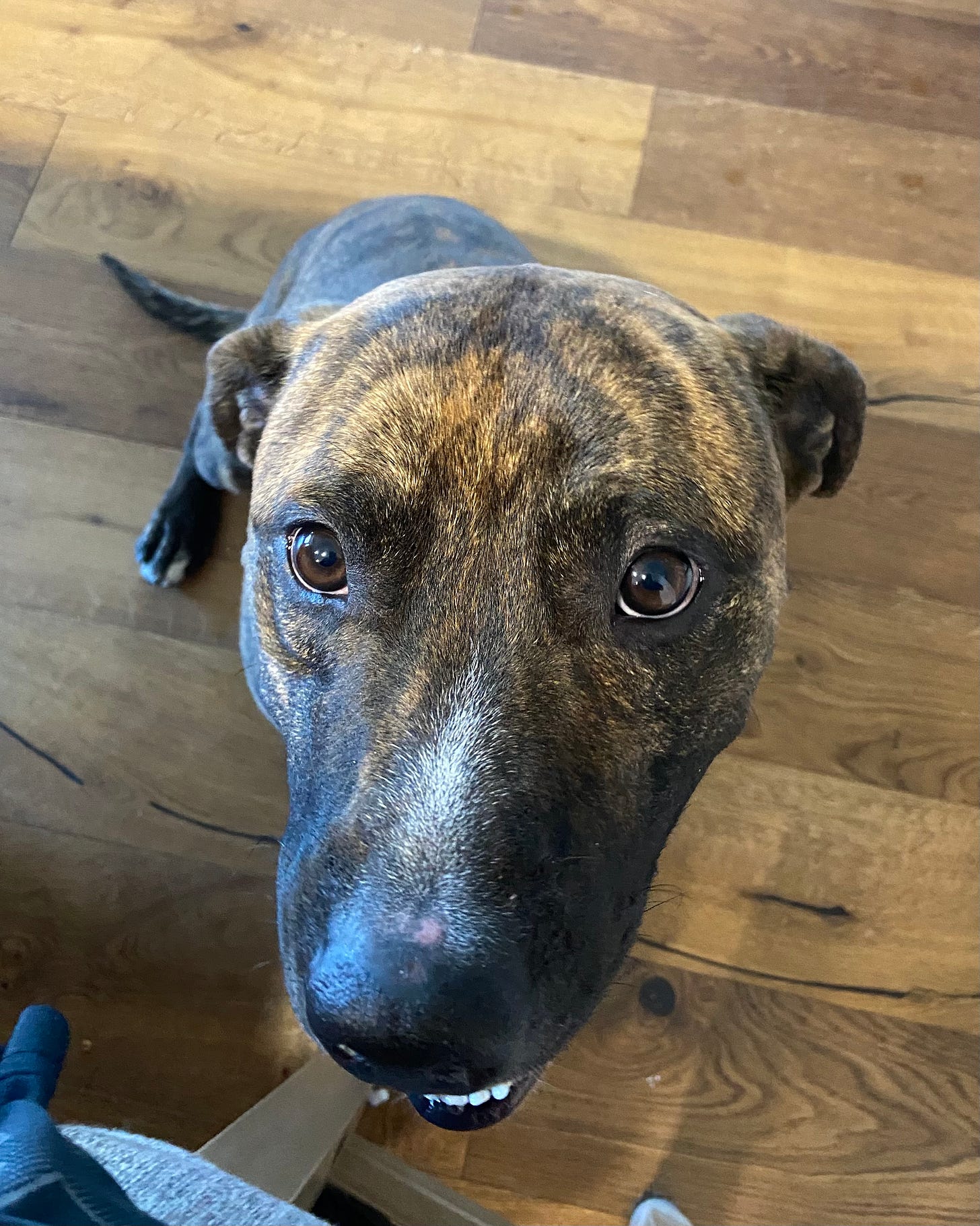We have a new dog.
Murph is a recent adoption due to the loss of our beloved 14-year-old Staffordshire Terrier mix, Bruiser.
Where Bruiser was settled in his ways and his behaviors modelled the rhythm of our family, Murph is a lovable, goofy, sixty-two-pound Staffordshire/Belgian Malinois mix, a two-year-old tornado. He sleeps at the drop of a hat, but when awake, it seems someone shoved a 10 pack of 9-volt batteries up his rear.
We are training Murph to be a good citizen and new brother to his sister, the nearly 16-year-old Ruby, and we want to do it quickly to minimize damage to hearth, home, and Ruby, of course!
Needing rapid change in any social/work system is a common need, no matter the situation. Over my forty-plus year career in management, the most common question I have been asked by managers is this: “What the fastest way to modify work behaviors?”
Since “fast” is a relative term, I tend to steer my answer toward “efficiency” rather than speed.
By far, the most efficient way I have found is to use a tool called Operant Conditioning.
As managers, we typically consider the punishment/reward model where we do something good for the desired behaviors/performance and some sort of punishment for the undesirable behaviors/performances.
Only focusing on just these two limits us to half our toolkit.
Through the first part of the 20th century, behaviorism became a major force within psychology. The ideas of John B. Watson dominated this school of thought early on. Watson focused on the principles of classical conditioning, once famously suggesting that he could take any person regardless of their background and train them to be anything he chose.
Operant conditioning was first described by behaviorist B.F. Skinner. As a behaviorist, Skinner believed that it was not necessary to look at internal thoughts and motivations to explain behavior. Instead, he suggested we should look only at the external, observable causes of human behavior.
In Skinner’s concept of operant conditioning, here are four quadrants that are consequences of behaviors and/or performance:
Positive reinforcement: adding something the person would enjoy. Example - Audience applause for an actor after a theatrical performance, increasing the chances of a repeat performance.
Negative reinforcement: giving the person an opportunity to remove a negative. Example - A professor tells his class that if they have perfect attendance, they won’t have to take the comprehensive final – the students are incentivized to show up in exchange for removing an undesirable event.
Positive punishment – adding something the person would not enjoy. Example - Assume, as in the first example, the actor is not good and gets booed. That is an affirmative punishment for an actor who craves approval and makes it less likely of a repeat bad performance.
Negative punishment – removing an established enjoyment. Example - Your child does not clean their room and do their chores, so you take their mobile phone or iPad away for a day – a positive stimulus is taken away.
It seems clear that doubling your tools means more rapid change.
The behaviorism of B.F. Skinner’s time has lost much of the dominance, but operant conditioning remains an important and often used tool in the learning and behavior modification process.
Of course, Murph is a dog and people are not dogs, but a basic understanding of behaviorism and operant conditioning reveals an application to human behaviors as well.



You DO have your hands full with that combo...Murphy looks adorable and "angelic" in the picture...looks are deceiving? 😉
I've raised Rottys and Blue Heelers...two really stubborn and smart breeds (I know I'm a glutton for punishment!). Of the two the smaller Heeler is by far the hardest, UNLESS they decide you are worth of their attention. Both of these require Alpha control because if either doesn't respect you...it won't work and everyone will be miserable.
I recommend Caesar Millan's videos and books for good info.
After 8 weeks of dog trainer school (Read "Blood, sweat, and tears) followed by multiple seminars and 15 years of hands on experience, I can provide you with the full benefit of that experience in four simple words: DOGS DO WHAT WORKS. Fortunately, the same principal applies to people. Good luck with Murph. I bet he is a stick of dynamite! Such fun! (Mostly)